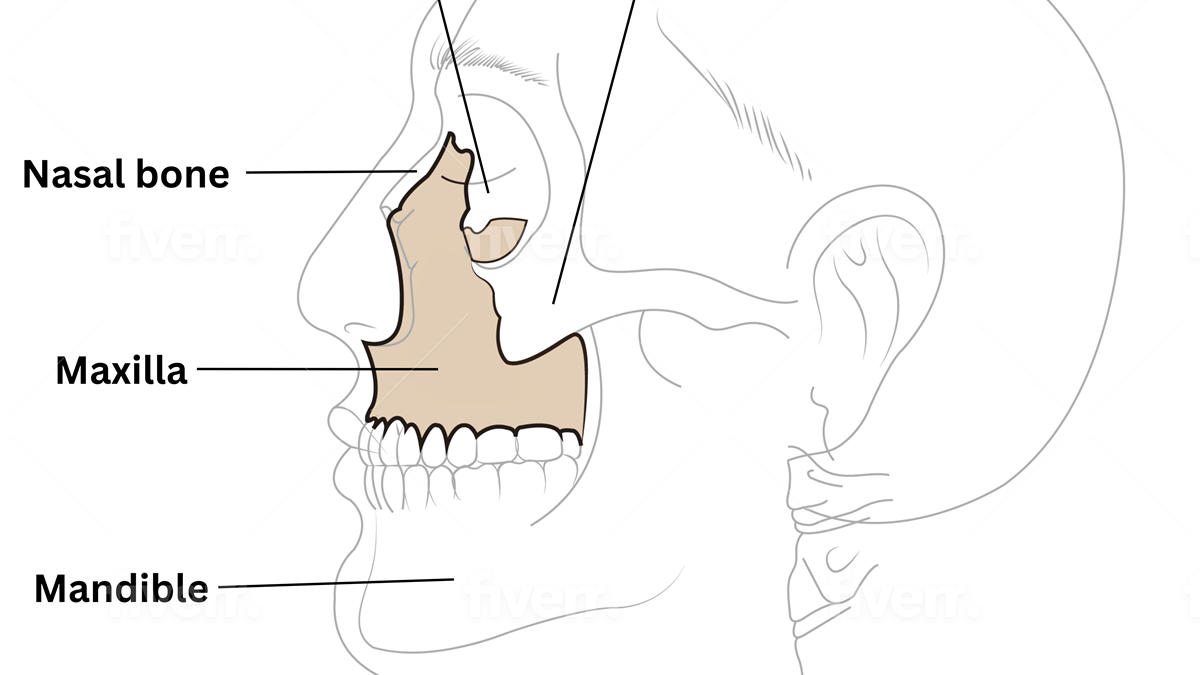Bone Structures in the Face
The Upper and Lower Jaw Bones
The Maxilla
The maxilla is the bone that forms the upper jaw. It holds the upper teeth, shapes the middle of the face, and supports the nose.
As well as providing key bone structure to the skull, the maxilla also plays an important role in chewing and speaking. It includes:
• the upper jawbone, including the front part of the hard palate (or roof of your mouth)
• the lower part of your eye sockets
• the lower parts and sides of your sinus and nasal cavities
The maxilla is fused to other important bones in the head, including the zygomatic bone (cheekbones), the palatine bone that makes up the back of the hard palate, the nasal bone that makes up the bridge of your nose and the nasal septum.
Many facial muscles are also connected to the maxilla. These muscles allow you to chew, smile and make a range of facial expressions.
For some people who have a salivary gland cancer tumour that has grown into the area behind the maxilla, it may be necessary for parts of the bone to be removed during surgery to gain access to the tumour and remove it. Parts of the maxilla may also need to be removed if the cancer has invaded the bone itself.
If you need such surgery, a Restorative Dentist will work with you to create a custom-made obturator. This is a removable dental prosthesis that seals any gaps in the roof of your mouth. Sometimes, an obturator also replaces any teeth lost from your jaw. This can also be done on a separate dental plate.
The Mandible
The mandible is your lower jaw – the largest and strongest bone in the skull. It shapes the lower jaw line, and the structure of the bottom third of your face, as well as holding your bottom set of teeth in place.
• The main body of the mandible is curved like a horseshoe and contains the teeth
• There are two mandibular rami, which rise perpendicular from the body on either side of the head
• Each ramus links with the temporal bone to form the temporomandibular joint, which allows the jaw to open and close for eating and speaking
• The mandible is also the attachment point for a range of powerful muscles used in eating and chewing
Sometimes, to ensure the complete removal of a salivary gland cancer tumour, it is necessary to excise some bone from the mandible. This tends to be more common during operations to remove the submandibular or sublingual glands, which are closest to the lower jaw.
Where needed, reconstructive dentistry or surgery can replace any bone or teeth removed.

